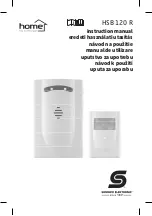
33
10.2 Analog Controls
10.2.1 Offset / Black Level
On Baumer LXG cameras with
Visual Applets
the offset (or black level) is adjustable .
Camera Type
1 step = 4 LSB
Relating to [bit]
LXG-40M.P
0 ... 63 LSB | 10 bit
LXG-120M.P
0 .. 255 LSB | 12 Bit
LXG-200M.P
0 .. 255 LSB | 12 Bit
10.2.2 Gain
In industrial environments motion blur is unacceptable. Due to this fact exposure times
are limited. However, this causes low output signals from the camera and results in dark
images. To solve this issue, the signals can be amplified by user within the camera. This
gain is adjustable from 0 to 12 db.
Notice
Increasing the gain factor causes an increase of image noise and leads to missing
codes at Mono12, if the gain factor > 1.0.
10.3 Defect Pixel Correction
Notice
If defect pixels should exist in the first (mono cameras) or in the first two (color
cameras) rows or columns of a ROI, these cannot be corrected with the defect
pixel correction.
In this case you need to move or increase the ROI by a few
pixels.
The coordinates of defect pixels can be read out with the Camera Explorer
(Category: Control LUT).
10.3.1 General information
A certain probability for abnormal pixels - the so-called defect pixels - applies to the sen-
sors of all manufacturers. The charge quantity on these pixels is not linear-dependent on
the exposure time.
The occurrence of these defect pixels is unavoidable and intrinsic to the manufacturing
and aging process of the sensors.
The operation of the camera is not affected by these pixels. They only appear as brighter
(warm pixel) or darker (cold pixel) spot in the recorded image.
Warm Pixel
Cold Pixel
Charge quantity
„Normal Pixel“
Charge quantity
„Cold Pixel“
Charge quantity
„Warm Pixel“
◄ Figure 16
Distinction of "hot" and
"cold" pixels within the
recorded image.
◄ Figure 17
Charge quantity of "hot" and
"cold" pixels compared with
"normal" pixels.
















































